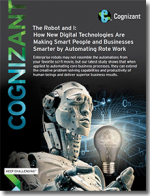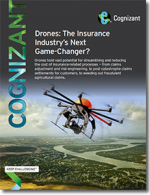Drones: The Insurance Industry’s Next Game-Changer?
Drones hold vast potential for streamlining and reducing the cost of insurance-related processes - from claims adjustment and risk-engineering, to post-catastrophe claims settlements for customers, to weeding out fraudulent agricultural claims.
Most of us have seen or read about the objects flying above soccer fields during the recent 2014 FIFA World Cup soccer matches.
These unmanned aerial vehicles (UAVs), or drones, were deployed as a security measure to patrol the skies during the sporting event. Understandably, the technology has captured the imagination of a wide audience because of its ability to maneuver and easily carry out activities that were previously performed by humans.
Drones have actually been in service since the 19th century, and used for years by the armed forces for reconnaissance. However, they are soon expected to take center stage with the anticipated ruling from the Federal Aviation Administration (FAA) on the use of small unmanned aerial vehicles in U.S. skies.
The Association for Unmanned Vehicle Systems International predicts that within 10 years (from 2015 to 2025) drones will create approximately 100,000 new jobs and around US$82 billion1 in economic activity. Equipped with new capabilities such as integrated audio and text with real-time video feeds and the ability to overlay images over existing footage through augmented reality, next-generation drones could have significant commercial value for businesses across industry segments.
Commercial and personal-lines insurers that cover property risks are likely to be early adopters of drone technology. For example, a property adjuster or risk engineer could use a drone to capture details of a location or building, and obtain useful insights during claims processing or risk assessments. Drones could also be deployed to enable faster and more effective resolution of claims during catastrophes.
While challenges on the regulatory front, privacy concerns and a lack of certain capabilities could stall widespread use of drones in the near future, once these obstacles are overcome, drones could have a significant impact on the P&C insurance industry.
In this white paper, we will discuss the rapid growth of drone technology, what it will take for drones to have real business impact, and how several industries are already experimenting with drones. We will also cite four realistic scenarios for employing drones in the insurance industry.
What’s Related




Favorites





